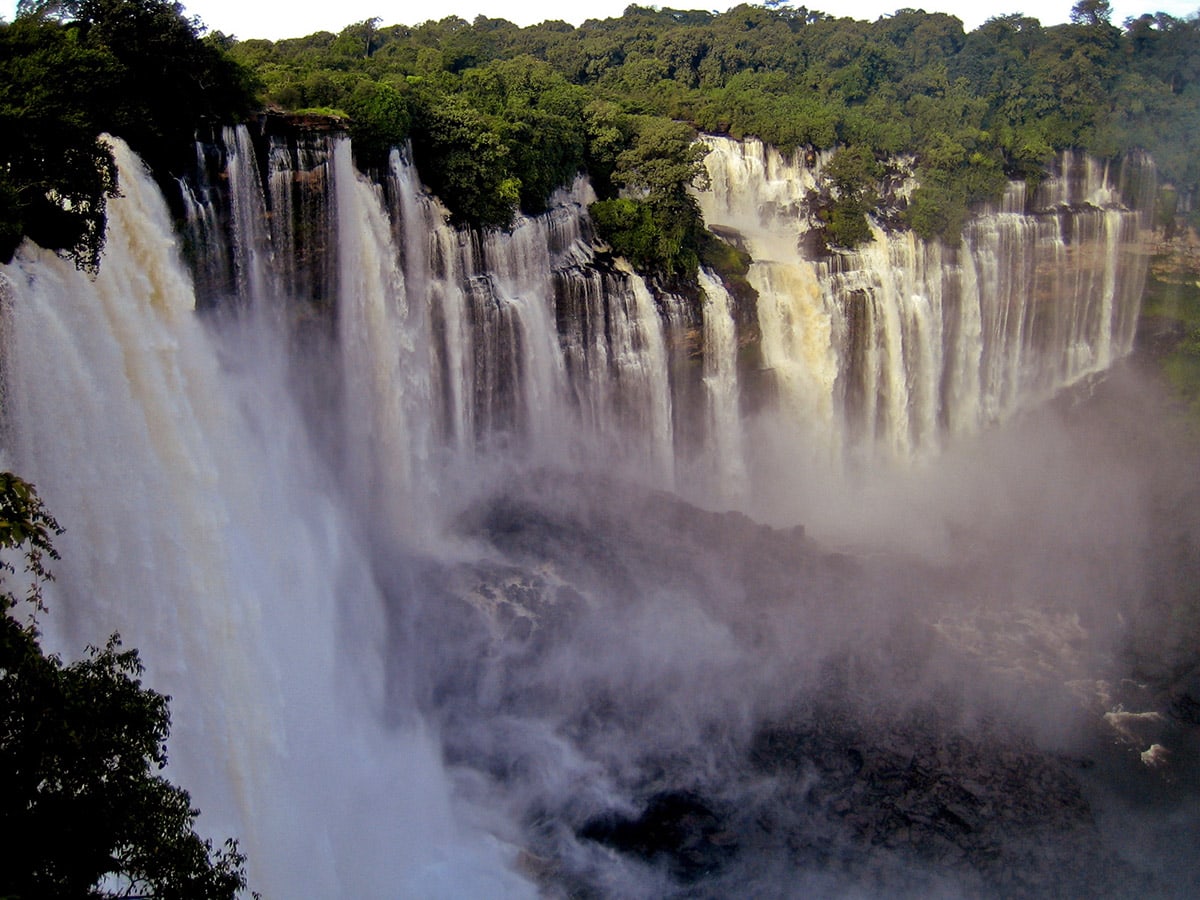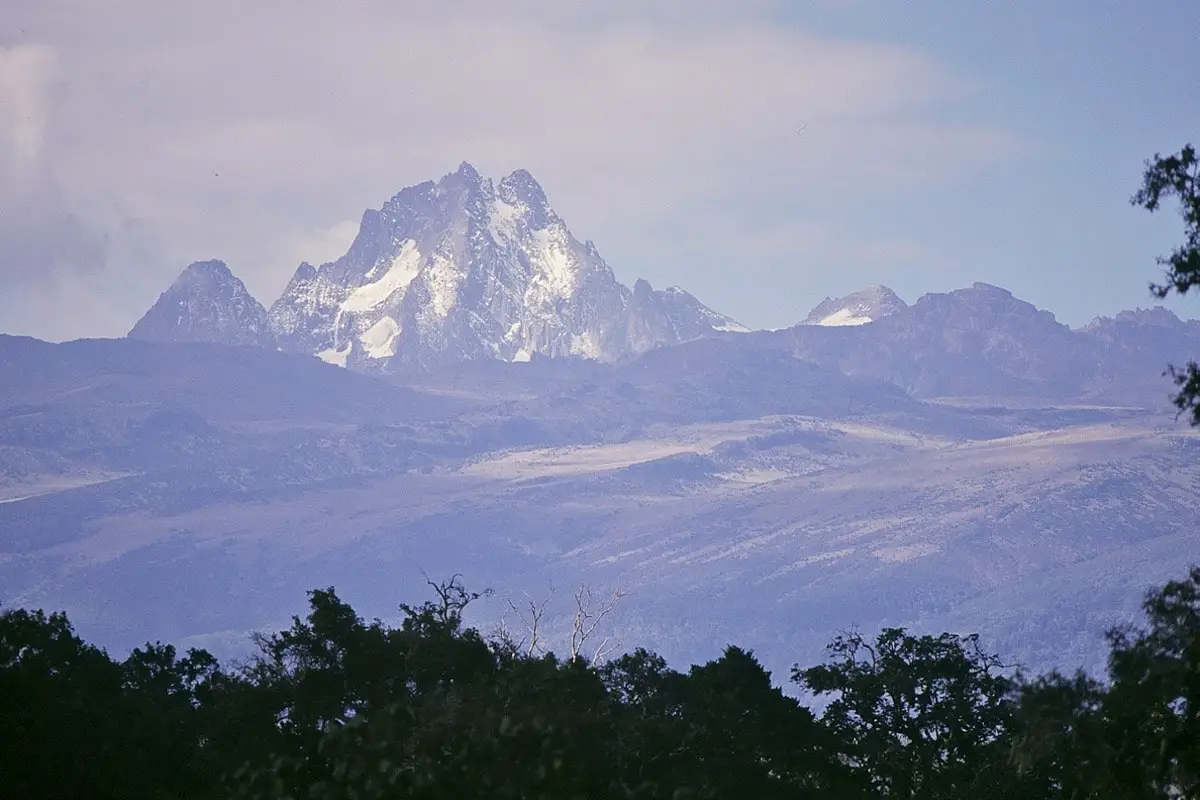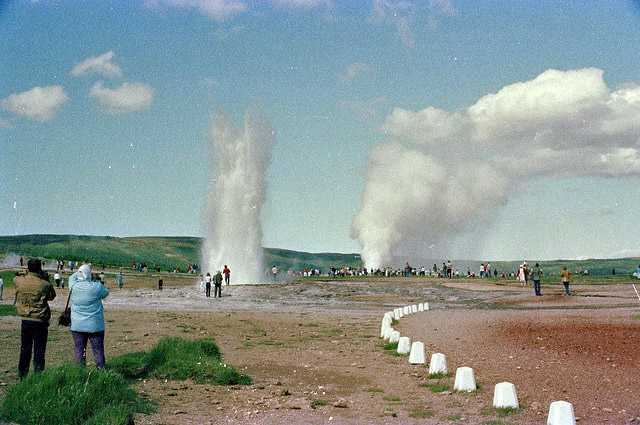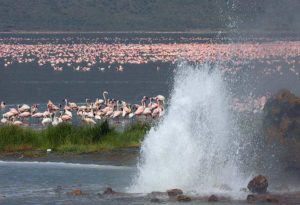 In short
In short
As the Suguta River is passing through the Gap (a place, where the flat Suguta valley is flanked by two volcanoes), the river is supplemented by numerous hot springs flowing from both sides of the valley. One of these springs – Logipi Geyser – up to the recent times was an active geyser.
 31.0%
31.0%
GPS coordinates
Location, address
Alternate names
Map of the site
If you see this after your page is loaded completely, leafletJS files are missing.
 In detail
In detail
Logipi Geyser was located near the base of the Samburu escarpment. Travelers in the 1930s reported that the geyser was erupting at regular intervals, discharging large volumes of water. The height of the geyser reached 1.2 m. The water was rich with minerals and there was formed a sinter basin in the front of the geyser.
Later the power of the geyser decreased, it turned into a perpetual spouter. An expedition in 1990 found here just boiling springs.
References
- T. Scott Bryan, The Geysers of Yellowstone, fourth edition. 2008. Boulder.
Logipi Geyser is included in the following article:
 Linked articles
Linked articles

Wonders of Africa
Africa has many outstanding wonders and some of the most surprising ones are the heritage of Egyptian civilization, the vernacular architecture of the Sahel region, tropical ecosystems, and others.

Wonders of Kenya
Kenya has a very diverse natural and cultural heritage with some truly unique monuments. Among the highlights of the country that should be mentioned are remnants of the very first humans, the exciting “islands” of biodiversity – remnants of ancient tropical rainforests on isolated mountain ranges, and the old coastal cities and villages.

Geysers
Hasty hydrogeologists would say: geysers are thermodynamically and hydrodynamically unstable hot springs. “Normal” people would say – geysers are hot springs that at more or less regular intervals shoot up a fountain of boiling water and steam. Sometimes these fountains are even 100 m tall… or even 450 m!
 Recommended books
Recommended books
Geological Atlas of Africa
The aim was simple: to assimilate basic geological facts for each African country, in order to give the regional geologist a digestible starting point for future research. The book, which is printed in full color on high-quality, glossy paper, is in A4 format and organized into four chapters. … the book is very attractive to a wider audience and shouldn’t miss the office table community. The Geological Atlas of Africa is a worthwhile addition to the regional literature on African geology.
Geology of National Parks of Central/Southern Kenya and Northern Tanzania
This book describes the interrelationship between the spectacular geology of an area of East Africa that includes a branch of the rift valley, as well as giant freestanding ice-capped mountains and extraordinarily toxic, alkaline lakes, and some of the greatest concentrations of wildlife on Earth. It suggests that geological processes that have shaped the iconic landforms, including active volcanoes, may also be responsible for the unusually diverse speciation which characterizes the region.



